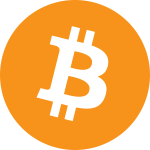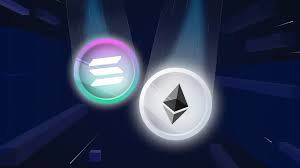Solana has quickly become one of the most notable blockchain platforms in the crypto world and is often ranked next to Ethereum. While Solana promises high transaction throughput and charges very low fees, the attention from developers, investors, and institutions has been staggering. Nevertheless, Ethereum remains the most dominant network for dApps and smart contracts. This generates some skepticism as to whether or not Solana’s technology is good enough to overcome and dethrone Ethereum or if it is just another player in a very crowded and competitive field.
For men and women who are willing to know what Solana is, learning how to buy any Solana comes first. For this purpose, Solana is present on many cryptocurrency exchanges. It allows its users to acquire the token with fiat currencies or other cryptocurrency equivalents such as Bitcoin or Ethereum. Popular exchanges such as BitDelta offer a diversified range of services for the acquisition of Solana. As always, investors need to select any platform appropriate to them regarding security, transaction costs, and ease of access.
The Core Technology of Solana
Another reason for the growing popularity of Solana lies in its advanced technology. While Ethereum uses Proof of Stake (PoS) for consensus, Solana employs a distinctive modern consensus support mechanism dubbed Proof of History (PoH). With PoH, Solana is able to order and confirm transactions at lightning speed, and this fact places this blockchain at the top of the fastest sites in the world. The key advantage here is that Solana can handle up to 65000 transactions per second (TPS), which is almost five orders of magnitude higher than what is possible currently on the Ethereum of about 15-30 TPS.
The remarkable degree of crypto assets' structural and functional expansion is one of the critical factors underlying the rapid rise of Solana among Dapps and NFT marketplace developers. Great throughput and cheap fees have made the growing Solana market appealing to people who want to create applications that scale without worrying about overpopulated networks or excessive gas prices, which used to be problems on Ethereum.
Furthermore, Solana’s architecture has a layered structure that enables the steps of the blockchain to expand without sacrificing the decentralization aspect. To secure the system, the network employs several validators while ensuring rapid transactions per second. The scalability advantage enjoyed by Solana's decentralization places it ahead of its competitors in the ever-more-pronounced blockchain tussle.
Strengths and Challenges of Ethereum Technology
Ethereum offers many benefits that further edge out Solana, even with the impressive technology built in Solana. The network Edger effects that have become a unique potion in Ethereum's growth are one of the most treasured assets. It has the highest number of developers, dApps, and DeFi projects, among which are more than three thousand dApps operating on the Ethereum blockchain. This broad ecosystem bestows the utmost reliability and trust on Ethereum, which younger platforms like Solana have not been able to justify.
Fortunately for Ethereum OR, thankfully, for Ethereum, it can be pointed out that speed and scalability have been the main issue. The growing popularity of the network resulted in congestion, high gas prices, and lagging transaction speeds. This hurt the users, particularly during high-traffic periods like NFT drops or a token launch. The upgrade to Ethereum 2.0, a solution aimed at solving these problems, including the abandonment of proof of work entirely and adopting the proof of stake model as well as sharding, is still underway.
The Growth of the Solana Ecosystem
The Solana ecosystem has grown exponentially due to the increasing number of projects being developed on the platform. Be it the DeFi protocols or the NFT marketplaces, Solana’s blockchain is experiencing rapid expansion. Some key projects that have been the backbone of the Solana ecosystem include Serum (DEx), Solend (lending and borrowing), and Magic Eden (NFT marketplace).
One reason for Solana's fast growth is its low transaction fees. Thanks to the nearly zero transaction fees, it is easy for both developers and users to build and use dApps without incurring large hidden costs in transactions. This has caused an upsurge in DeFi on Solana because people are looking for alternatives to the expensive Ethereum fees.
Besides, the Solana ecosystem has grabbed the attention and funding of several important venture capital and institutional players. The Solana Foundation, which manages the network's Development, has formed alliances with major companies, which has helped pump millions of dollars into the ecosystem. These funds enable Solana to acquire the necessary funds for continuous improvement and Development of the system, hence becoming a strong player in the block chain technology market.
The Rise of Solana And The Impact Of NFTs
Solana has also become one of the main players in the NFT market. If Ethereum is still the king of NFTs, Solana has already built a reputation as a fast and cheap alternative. As the NFT market expands, many creators and collectors will want to mint, purchase, and trade their tokens on cheaper alternatives. This is what Solana has been able to exploit since it was very convenient to buy and sell NFTs on the blockchain.
On the one hand, multichain NFT marketplaces like SolSea and Solanart offer an effective way to tap into Solana’s user base while providing creators with a cheaper alternative to OpenSea, which is dependent on Ethereum. The growing passion for Solana NFTs has also contributed to increasing the number of transactions carried on the network, further improving its status as a real rival to Ethereum.
In recent months, Solana has continued to attract a number of high-profile NFT projects and communities, thereby solidifying its place in the crypto ecosystem. As many creators and collectors embrace the platform, Solana’s position in the NFT space keeps rising.
Examining Security in Contradistinction to Decentralization
Out of the many advantages that Solana has over Ethereum, one positive area that remains with Ethereum is security and decentralization. This is mainly due to the large number of nodes that secure the Ethereum network all over the world, making it very decentralized and hard to attack. Besides, due to the established trust of the community over time, an old blockchain such as Ethereum has been very useful, unlike newer blockchains like Solana.
Even if Solana claims that its Proof of History makes it possible to process many transactions per second, critics say it also has drawbacks, including fewer validators when compared to Ethereum, which may lead to being centralized and attacked. The network went down in September 2021 for a few hours due to a denial of service attack. Even though the problem was dealt with very swiftly, it was still something that gave rise to the question of whether or not the network was really robust or secure.
Solana’s team has since put up some fortifications on the platform in question, but the incident goes to show how high or low the bar is on such new networks when they are still trying to grow. On the other hand, although Ethereum has its challenges with scalability, over the years, the network has been proven to be very dependable and safe, which is why a lot of developers and users go to the blockchain that is Ethereum.
Conclusion
With abilities such as the Proof of History consensus and high transaction speed, Solana can be viewed as a serious competitive force within the blockchain space. Rapid Development of the ecosystem, low cost of solutions, and participation in the NFT market also increase developers' and investors' interest. Another ERC20-token standard, which enables the creation of ICOs on the Ethereum blockchain, is also one of the reasons it is difficult to dethrone Ethereum as the leading blockchain platform.
Regardless, there are opportunities for Solana to have its own market space in the ecosystem. However, the economy and the institutions that Ethereum possesses because it was the first in the market, make it hard to break through the barriers of entry. As each of the blockchains comes with its pros and cons, it can be expected that their rivalry will prompt greater advances in such an industry.
Disclaimer: Investing in cryptocurrencies entails hazards. Likewise, it is important to highlight that one should never invest an amount that one cannot afford to lose. One must always get professional help regarding finance since they deal with money matters.






Comments